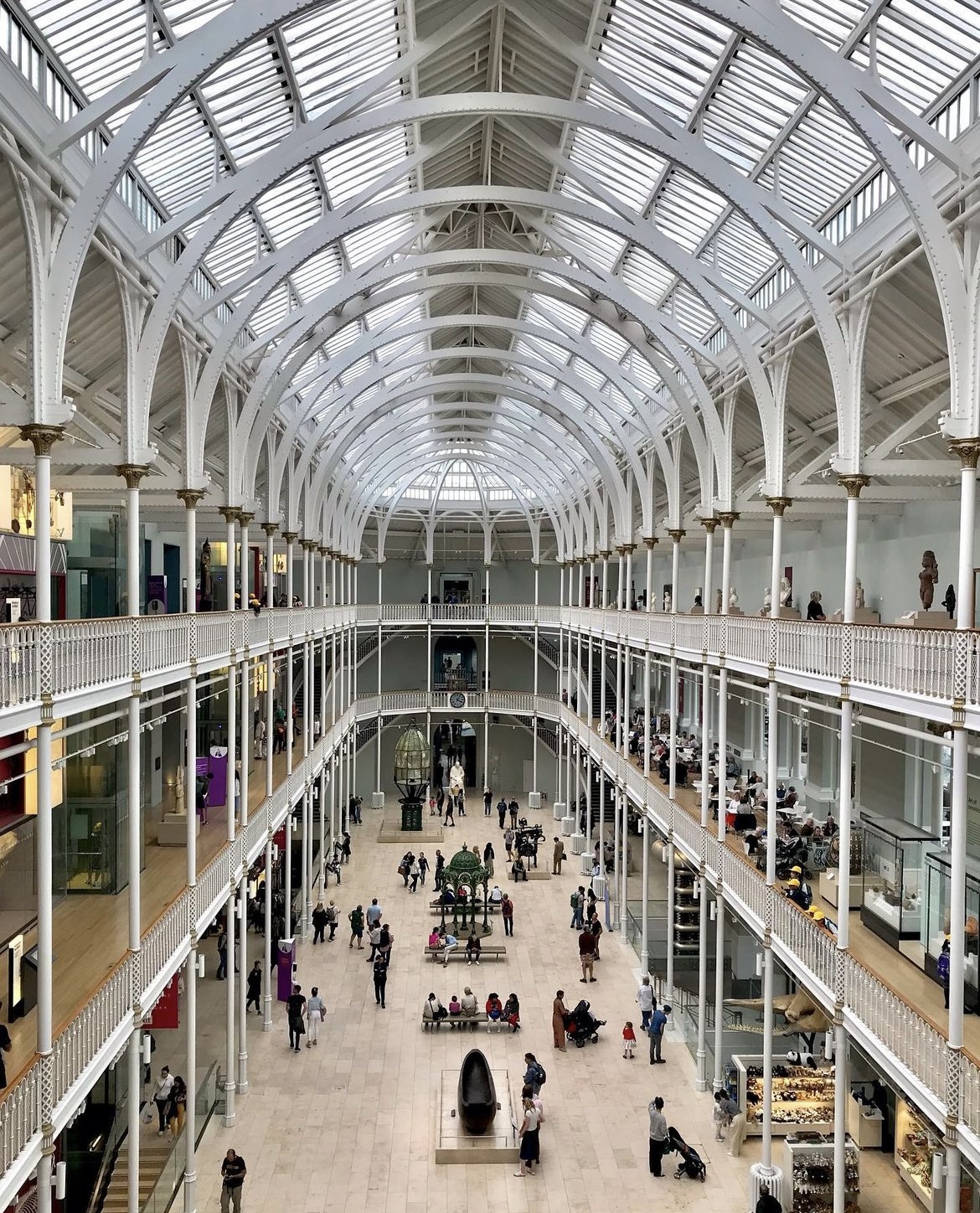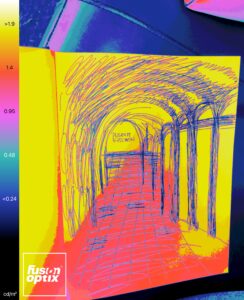Two Fridays ago, we went on a site visit to the National Museum of Scotland. There, we measured the daylight factor in different areas of the museum, we drew sketches of interiors that showcased a great relationship with light and overall we understood how important light or the absence of light is. How it can make or break a space. I find the basement area and the groundfloor to be of a very satisfying contrast, in the sense that both interiors are quite similar in terms of arches and columns, yet they convey a completely different feel and atmosphere because of the light. The use of light in museums is crucial for various reasons, including the illumination of exhibits, creating ambiance, enhancing visibility, and contributing to the overall visitor experience. The National Museum of Scotland, in my opinion, is a prime example of light used to its full potential. The architecture and the overall structure of the main hall of the building remind me of Joseph Paxton’s Crystal Palace, where the use of modular architecture and the combination of iron cast steel and glass allow for the space to be bathed in a cascade of natural light.
The use of light in museums is an art of its own, designed to enhance the visitor experience while preserving the integrity of precious artefacts. Illumination serves multiple purposes, from showcasing exhibits and emphasizing architectural features to creating a specific ambiance within each space. Museums leverage both natural and artificial light, strategically balancing brightness and color temperature to optimize visibility without compromising the conservation of delicate objects. Energy-efficient solutions, such as LED lighting, are commonly employed to reduce environmental impact and operational costs. Lighting designers work hand-in-hand with curators to craft various scenes, adjusting levels to draw attention to focal points or immerse visitors in interactive displays.
When it comes to museum lighting, the most common types of luminaires are fluorescent lights, incandescent lights, halogen lamps, and most importantly, LED lights.
They are by far, the most efficient luminaire, as they are cost efficient, have a longer life span then fluorescent lights for example and they present various advantages over traditional lighting methods.
LED lamps offer accurate color rendering, energy efficiency, and preservation benefits, enhancing the visitor experience while minimizing damage to valuable artwork. Glare, which is the downside of most light fixtures, can be easily taken care of through the use of directional lightings, such as LED spotlights and track lighting, which can be used to focus the light precisely where needed, thus reducing the risk of glare.
To conclude, museum and exhibition lighting is a quite intricate domain, as there is a vast criteria that needs to be taken into consideration, before deciding on the type of luminaire.

Sources: Anon (2015) Lighting for museums and art galleries. London: Society of Light and Lighting.
Turner, Janet. (1998) Designing with light : public places : lighting solutions for exhibitions, museums and historic spaces / Janet Turner. Cèligny: RotoVision.
Osticioli, I. et al. (2018) Warm white LED lighting in museums: Ageing effects on terpenoid resins assessed through Raman spectroscopy and chemometrics. Strain. [Online] 54 (3), .
Fig1: Comparison with Traditional Lighting Options
Museum Photos- take by me (Daria)- arched interiors, play between light and dark.







